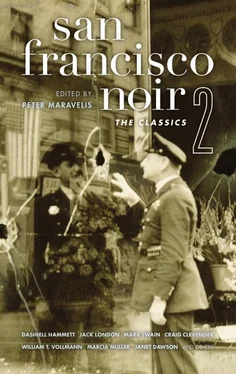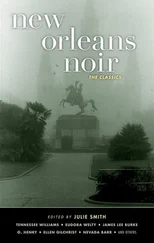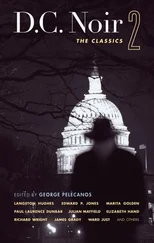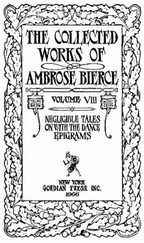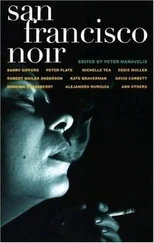Ambrose Bierce - San Francisco Noir 2 - The Classics
Здесь есть возможность читать онлайн «Ambrose Bierce - San Francisco Noir 2 - The Classics» весь текст электронной книги совершенно бесплатно (целиком полную версию без сокращений). В некоторых случаях можно слушать аудио, скачать через торрент в формате fb2 и присутствует краткое содержание. Город: New York, Год выпуска: 2009, ISBN: 2009, Издательство: Akashic Books, Жанр: Детектив, на английском языке. Описание произведения, (предисловие) а так же отзывы посетителей доступны на портале библиотеки ЛибКат.
- Название:San Francisco Noir 2: The Classics
- Автор:
- Издательство:Akashic Books
- Жанр:
- Год:2009
- Город:New York
- ISBN:978-1-933354-65-1
- Рейтинг книги:5 / 5. Голосов: 1
-
Избранное:Добавить в избранное
- Отзывы:
-
Ваша оценка:
- 100
- 1
- 2
- 3
- 4
- 5
San Francisco Noir 2: The Classics: краткое содержание, описание и аннотация
Предлагаем к чтению аннотацию, описание, краткое содержание или предисловие (зависит от того, что написал сам автор книги «San Francisco Noir 2: The Classics»). Если вы не нашли необходимую информацию о книге — напишите в комментариях, мы постараемся отыскать её.
, which captures the dark mythology of a world-class locale.
San Francisco Noir 2: The Classics — читать онлайн бесплатно полную книгу (весь текст) целиком
Ниже представлен текст книги, разбитый по страницам. Система сохранения места последней прочитанной страницы, позволяет с удобством читать онлайн бесплатно книгу «San Francisco Noir 2: The Classics», без необходимости каждый раз заново искать на чём Вы остановились. Поставьте закладку, и сможете в любой момент перейти на страницу, на которой закончили чтение.
Интервал:
Закладка:
San Francisco Noir 2: The Classics
Careful now. We’re dealing here with a myth. This city is a point upon a map of fog; Lemuria in a city unknown. Like us, it doesn’t quite exist.
— Ambrose Bierce

Introduction
Chasing shadows
San Francisco is a town made for noir. Long before Hammett’s muse seduced him with fog and mist to pen The Maltese Falcon , European explorers and Christian missionaries had already laid the groundwork for the genre. Just ask the Ohlone indigenous peoples. The city’s history is a shadowy one. It is founded upon the spilling of blood.
From its origins as a frontier boomtown to its ascent as an imperial financial giant, the city of Saint Francis has served as an inviting home to all manner of transgression and villainy. Drawn to the romantic landscape by the lure of possibility, millions have flocked here to cast their stakes in the hope for prosperity, pleasure, and a personal freedom seldom dreamed of elsewhere. Following the imperatives of manifest destiny, the city’s pioneers engaged in fraud, larceny, kidnapping, and murder. The prospect of gold led many to their demise while establishing a terrain ruled by the human passions. Frank Norris so beautifully captured this in his classic novel McTeague , later transformed into the epic film Greed , by legendary director Erich von Stroheim. It is a classic tale of dreams gone awry. The avaricious appetites of the story’s characters lead them into a spiral of destruction where the possibility of redemption is completely vanquished. By the tale’s end, our antiheroes are left with only two possible options: jail or the grave. What could better illustrate a noir sensibility?
With the release four years ago of the first volume of San Francisco Noir, we brought together a team of seasoned writers to compose original works that gave the reader a sinister sense of the city. The success of that volume was encouraging and we have returned with a new task at hand: to present a collection of classic reprints, some hitherto buried by the passage of time, which depict a town riddled by inequity from its very beginnings.
While tracing San Francisco’s extensive noir canon, one essentially creates a bridge between past and present. The literary meets the historic in a lyrical weaving of narratives. Sociopolitical landscapes intersect with personal and collective histories, bringing to light forgotten fragments of the past. Noir serves as an oracle, a looking glass with which we reconnect with the vast continuum of events that have shaped the city’s topography and the character of its citizens.
Noir is the language of politics without ideology.
The flowering of tragedy has taken many forms over the course of a century. Let us follow a timeline to better observe the recurring themes and significant patterns that emerge. Issues concerning race, class politics, identity, human rights, and the effects of industrialization correspond to the ebb and flow of San Francisco’s history. Writers have explored the infernal underbelly of city since the California Gold Rush. Samuel Adams Drake, in his novel The Young Vigilantes , painted a picture of the harsh conditions of Barbary Coast living during the 1800s. In the shadow of the Civil War, shanghaiing flourished in the city and brought into existence an underworld culture of “crimps,” “boatmen,” and “vigilantes.” This traffic in human flesh was to set the stage for modern noir fiction. Mark Twain, meanwhile, offered a satirical yet hellish portrait of the San Francisco criminal justice system in his short piece included here titled “The Black Hole of San Francisco.” The birth of “noir journalism” was born, paving the way for future classics such as Norman Mailer’s The Executioner’s Song . It is interesting to note the use of Twain’s language in this piece. As strongly anti-imperialist and progressively minded as he was, he too was touched by the way racism was embedded within the vernacular. A prison house of language made it possible to deny agency to persons of color and hence view them as something less than human. This problem is reflected in a few of the other stories in our collection as well. Even critical thinkers of the time could succumb to the prevailing prejudices.
It is significant to note that the post — Civil War era noir writers share similar threads of thinking in regards to the human condition. A dialectic between free will and determinism roams throughout their narrative structures. The persistent question arises: Do humans have any say in their own fate? The great satirist and storyteller Ambrose Bierce was a master at cultivating moody atmospherics that threatened to overtake his protagonists. In his short story “Beyond the Wall,” he describes a desolate, foggy, and mysterious geography bordering on the supernatural. A man in a carriage struggles against the elements to reach his destination, only to realize upon arrival that the ailing friend he has come to visit has gone mad. In the Bierce story we’ve chosen for this volume, “A Watcher by the Dead,” he experiments with claustrophobia, pitting human endurance against the morbidity of an enclosed space. Protagonists are seen gambling against the sanity of a fellow human. Bierce’s macabre sensibility reveals a psychopathology rooted as much in naturalism as in the supernatural.
As noir entered the twentieth century, the engines of industrialism provided the backdrop for the themes of identity crisis and class division. Jack London’s “South of the Slot” shines brightly as it prognosticates noir’s interest in doppelgängers, split personalities, and the rough and tumble of the streets. First published in the Saturday Evening Post in 1909 and reprinted here, it also uncannily foreshadowed the General Strike of 1934, where suppressed class tensions led to battles in the streets of San Francisco between workers and the state apparatus. The post — world war era ushered in elements of anxiety and despair that cut deep into the fabric of culture. Works we have selected by Fletcher Flora and Joe Gores illustrate the destruction of the social contract. With the advent of the cold war, all bets placed during the New Deal were off. The militarization of the homeland led to the systematization of censorship, the beginning of the prison-industrial complex, Hollywood blacklisting, and the repression of individual liberties. Noir mirrored the damage.
By the time of the information explosion, a newer generation of writers arrived to herald the appearance of a wholly plutocratic era. Bill Prozini’s story explores the ferocity with which urban living has ravaged those forced to the margins. Oscar Peñaranda’s writings meditate upon the dashed hopes and dreams of immigrants living in the diaspora and how they manage to survive. His portrayal of life in San Francisco’s Manilatown offers insight into a complex community that once thrived on the edge of Chinatown and North Beach. Janet Dawson looks at the fracturing of the nuclear family in her modern take on Hansel and Gretel called “Invisible Time.” She asks if it is possible for innocence to exist in the face of brutality. William T. Vollmann has sought to find beauty in what most people would consider the grotesque. Prostitutes, serial killers, multiple personality types, and the marginalized populate his tales. (Through an alchemy of heart, his charcoal drawings of Tenderloin prostitutes have offered a rare view of the humanity to be found in the unlikeliest of places.) John Shirley takes an infernal ride and follows the doomed, and the newly doomed, upon their journey into the furnace of the inner city; reality warps as sanity and madness merge to form their own twisted logic. Craig Clevenger traverses the wastelands of suburbia with a razor tongue, cryptically decoding the lives of his characters with a vengeance. He has created an “algebra of noir,” an urban “book of the dead,” that navigates the twilight realm where lost souls, both living and dead, await their final dissolution.
Читать дальшеИнтервал:
Закладка:
Похожие книги на «San Francisco Noir 2: The Classics»
Представляем Вашему вниманию похожие книги на «San Francisco Noir 2: The Classics» списком для выбора. Мы отобрали схожую по названию и смыслу литературу в надежде предоставить читателям больше вариантов отыскать новые, интересные, ещё непрочитанные произведения.
Обсуждение, отзывы о книге «San Francisco Noir 2: The Classics» и просто собственные мнения читателей. Оставьте ваши комментарии, напишите, что Вы думаете о произведении, его смысле или главных героях. Укажите что конкретно понравилось, а что нет, и почему Вы так считаете.
